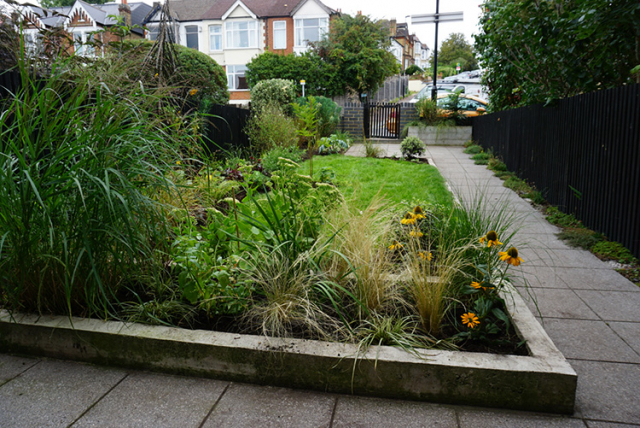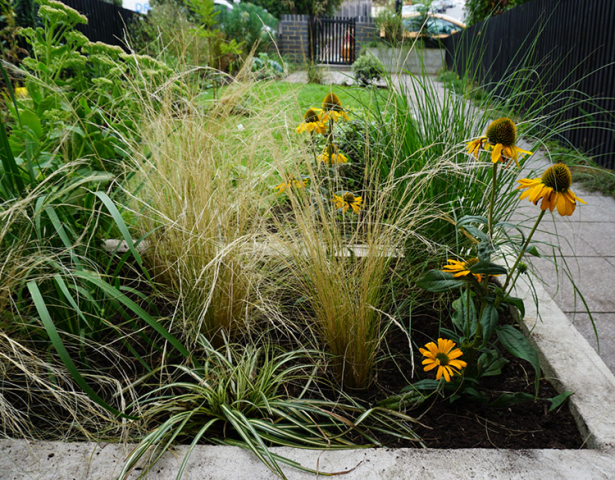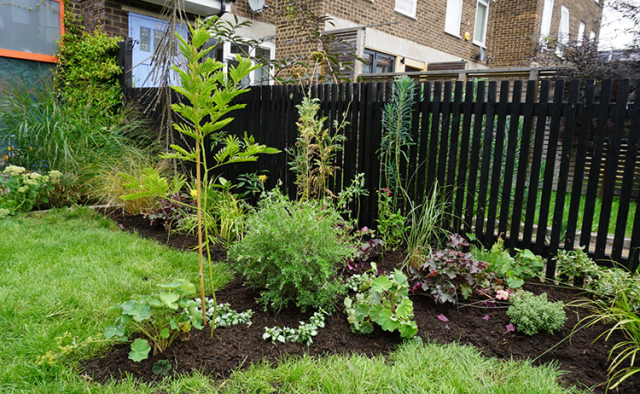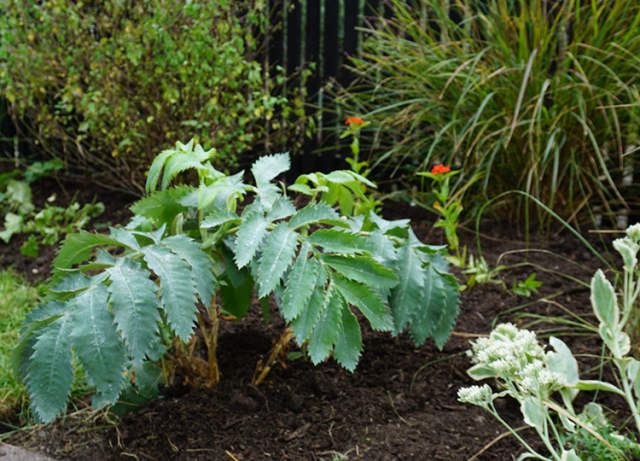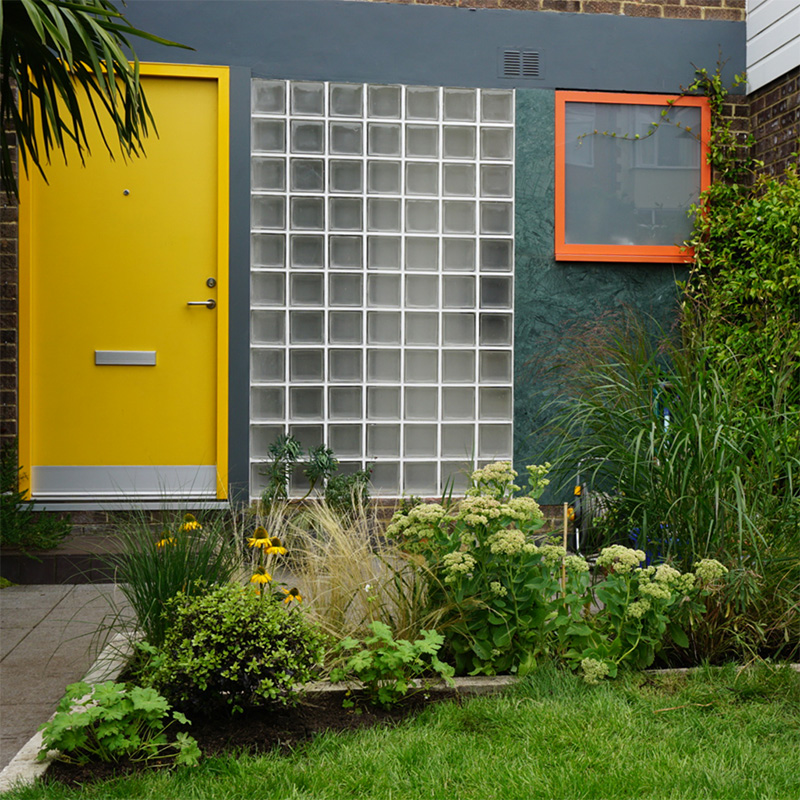
SE23 – Sunny Front Garden
Design considerations and challenges:
- Size ca 12sqm
- Front garden
- Tall 1960s town house, strong architectural look and bold colours
- Open aspect
- Can get windy
- South facing, very sunny
- Overlooked from the road
- Most current planting low at knee height
- Remove existing wildflowers from beds
- Very narrow beds around a lawn
- Increase and re-design bed layout
- Retain grasses, salvia and small tree
The Brief
The client’s vision was to have a green tapestry and naturalistic planting scheme with little bare soil visible. The inspiration was the gravel gardens at the Horniman museum in South London. She had tried to introduce the naturalistic look with lots of grasses and a pre-grown wildflower mix that she planted into the narrow borders along the lawn edges. Wild flowers are thuggish and they ended up smothering the grasses and other perennials. The plants also started invading the lawn and the neighbours garden. As the beds were narrow the naturalist look didn’t materialise and instead it looked overgrown and untidy. Wildflower mixes need space to truly look good and natural.
The brief was to re-design the bed layout, retain the grasses, have no purple colour or old fashioned ‘granny style’ plants, keep cost as low as possible, and have good ground cover.
The new planting scheme is naturalistic and fun and has some architectural plants as highlights. The planting scheme considered the strong architectural shape of the house and striking colours of the door and window and plants were added in in to provide pops of colour to reflect the yellow door and orange window surround. Pseudpanax ferox was added for height and its quirky architectural shape as was Melianthus major. Evergreen shrubs add year-round structure and colour as well as some screening from the road. Large grasses such as Miscanthus sinensis spp add to the screening effect whilst keeping it naturalistic and loose.
Evergreen and semi-evergreen ground cover plants will over time ‘knit together’ to create the ‘green tapestry’ look the client envisaged whilst also being low maintenance.
Key plants used
Trees: Pseudopanax ferox / Acacia dealbata (existing)
Shrubs: Pittosporum ‘Tom thumb’ / Melianthus major / Hebe ‘Sutherlandii’
Perennials: Geranium spp / Alchemilla mollis / Heuchera spp / Lamium maculatum / Kniphofia ‘Banana Popsicle’ / Lychnis chalcedonica / Phlomis russeliana / Stachys byzantina / Echinacea ‘Sunseekers Yellow’ / Achillea filipendulina ‘Cloth of Gold’

